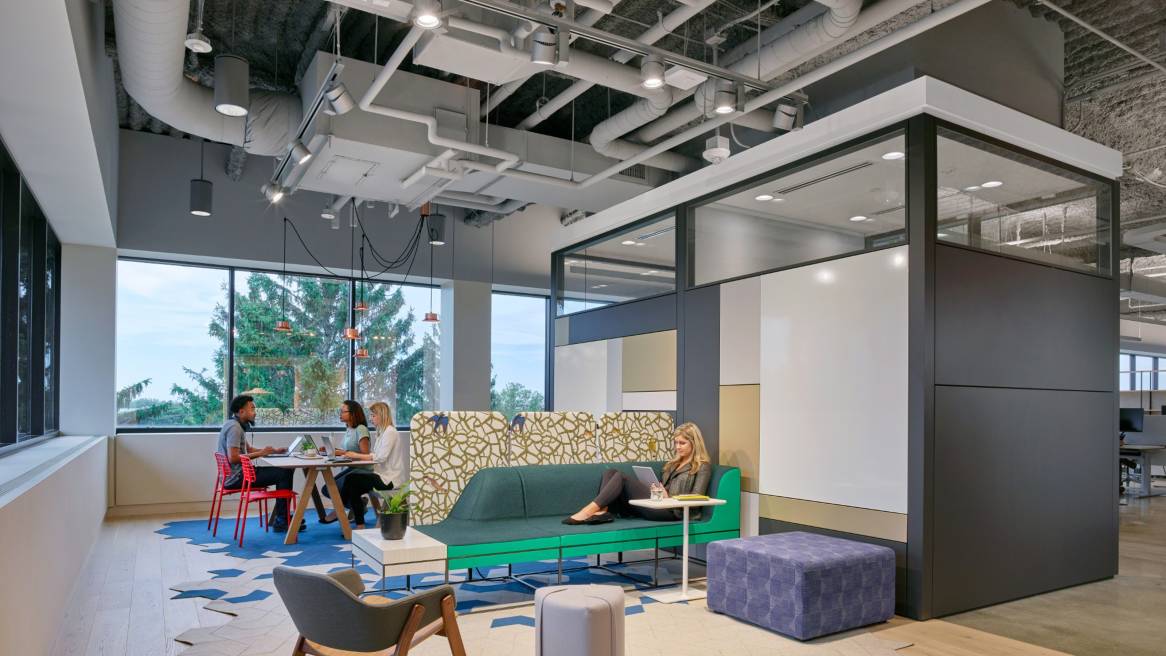Wellbeing: Core to 2020 Office Design Implications
The Steelcase Global Design Studio shares five design implications they are watching for the coming year.
The war for talent. Digital transformation. Sustainability. Three macro forces are driving dramatic change in the workplace evidenced by design implications for the coming year. 360 spent time with Steelcase Global Design Studio Designer Kaitlyn Gillmor and Senior Interior Designer Jon Rooze whose job is to know what’s coming, what matters and how it manifests itself in the design of the workplace.
The red thread that runs through all of the design implications Rooze and Gillmor shared is wellbeing. At a time when technology has saturated nearly every aspect of our lives, there’s a rising consciousness that humans are at the core of an organization’s success.
“The organizations that rise to the top achieve clarity in terms of their values and are able to communicate how they are differentiated which attracts customers and employees,” says Rooze.
The workplace plays an important role since it can act as the body language of an organization. Here are the major design implications Gillmor and Rooze are watching.
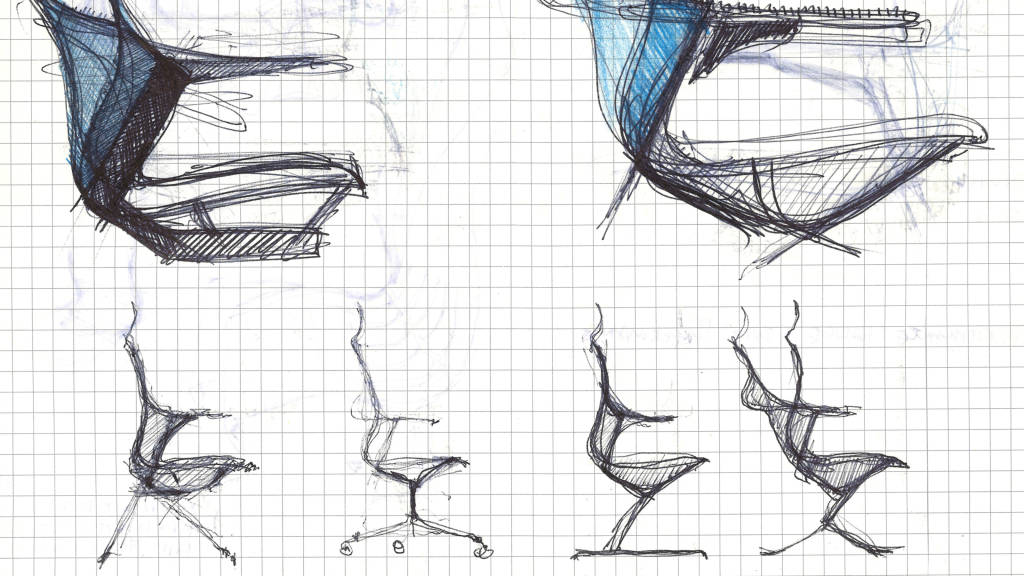
1. ORIGIN STORIES
People are eager to understand the origin story behind where they work and what they consume. The consumer mindset is shifting away from perfection and toward embracing natural materials and diversity in design which connects to people’s desire to have a deeper connection with where they work and what they buy.
Workplace Examples
- Transparency is key. There will be less hidden behind the curtain because to buy-in to values and culture, people need to see what’s happening underneath the surface. Designers will curate more of what’s around a space to share influences and inspiration as well as the human connection behind a product or service.
- Waste is a resource. Companies and designers are finding ways to repurpose what had been considered waste to add value to space and let people feel good about what they’re consuming.
- Beyond simply finding moments to reconnect with nature in the workplace, designers are harnessing what biology has to offer to integrate nature in new ways. An interest in mycelium textiles is an example of how the definition of fabrication is changing. Fabric made of mushrooms is non-toxic, waterproof and fire-resistant.
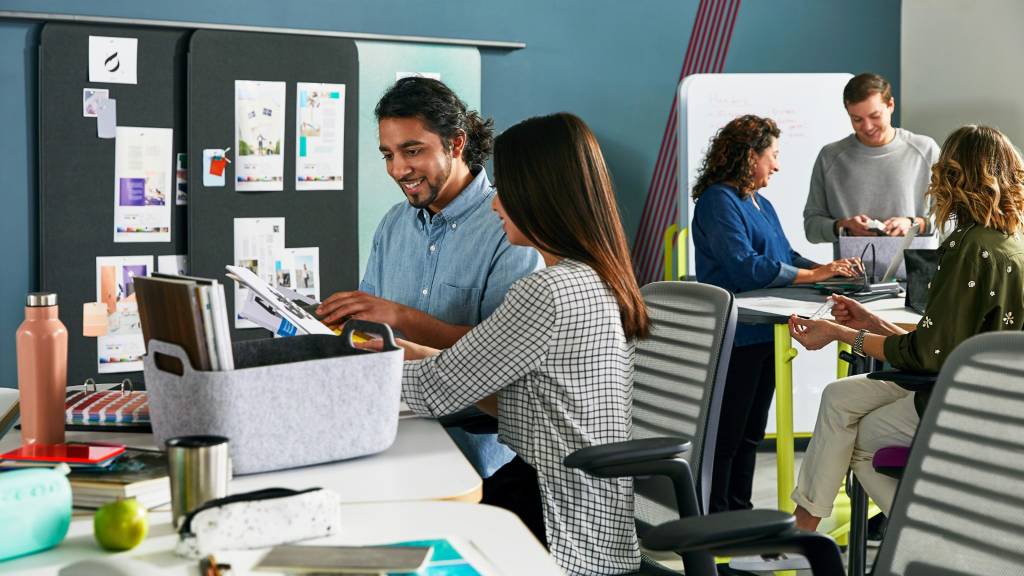
2. CONNECTED CULTURE
When you add the importance of talent to the rise of burnout and loneliness, it’s easy to see how the workplace is an opportunity to build communities connected by a shared culture. Space is a way for people to walk into work and immediately see a company’s values.
Workplace Examples
- Large overarching brands that used to let their consumer-facing products speak for themselves are now stepping forward with a clear corporate message. People no longer separate customer experience from a company’s cultural values.
- Organizations are putting increased emphasis on how people feel and work better when wellbeing is supported holistically. Instead of just offering a gym or healthy food options, companies are looking at how lighting, materiality, color, social spaces and other elements of the work experience help people feel good.
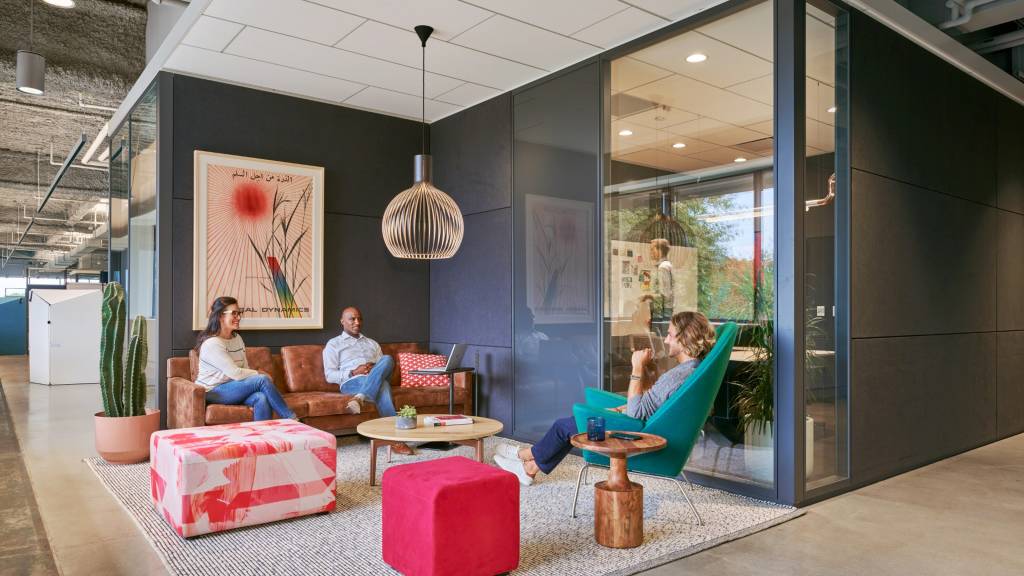
3. SOCIAL MEDIUM
The “retail apocalypse” closed 12,000 stores in the last decade. Those that have reinvented themselves are creating a theatrical, social experience to draw in customers. They are focusing on becoming a destination that groups of people want to visit together.
Workplace Examples
- People are innately social animals. They are increasingly heading into the office to work with others — teamwork is increasing with no signs of slowing. Office design is moving away from gimmicks like ball pits and beer fridges, and toward impactful spaces and tools that encourage and enhance collaborative work.
- The workplace is being intentionally designed to support teamwork, but also to support the cross-pollination of ideas outside of teams. “Humans have to be intentional about how they step back from their perspective to avoid groupthink and foster innovation,” says Gillmor.
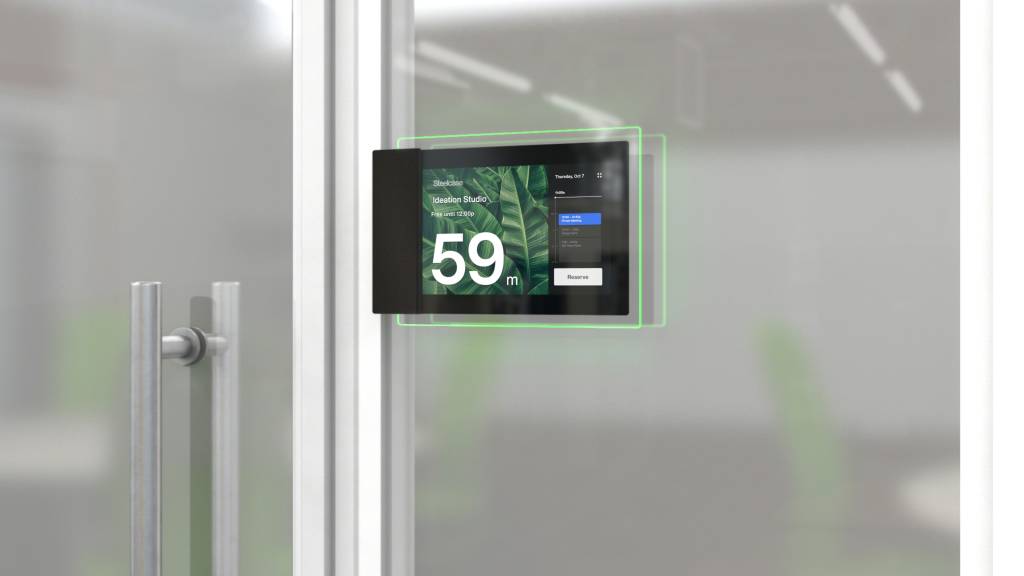
4. FRICTIONLESS ENVIRONMENTS
Time is the new luxury. Technology is being layered into the workplace to augment the environment — helping people focus, prioritize time and offload non-value add tasks. More and more, both analog and digital elements are being designed to make things effortlessly easy.
Workplace Examples
Furniture is being created for the office that lets teams easily reconfigure it in the moment. (ex. Steelcase Flex Collection)
Walking into an office space, a digital assistant automatically books the space for you (it can release it as well if you don’t show up).
Innovation in materials science created the SILQ office chair which responds to the inputs your body gives it with only one adjustment — height.
Retail experiences allow you to use a QR code to decide what you want to try on and it’s added to a fitting room.
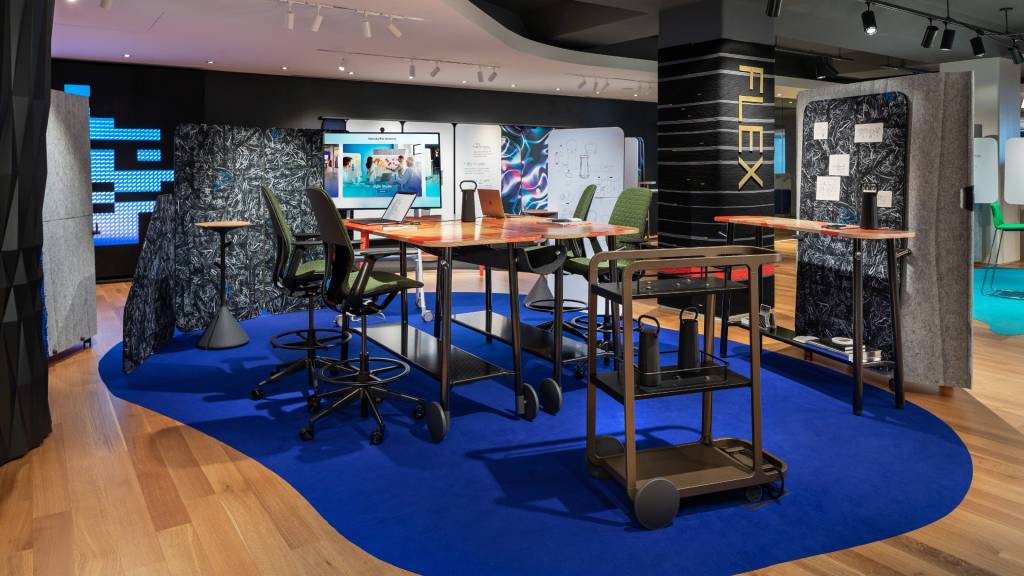
5. MAKE YOUR MARK
There are less one-size-fits-all experiences at work. More and more designers are reimagining the workplace to be more personal and more seamlessly responsive to individuals and teams.
Workplace Examples
- More and more collaborative spaces are not owned by individuals or teams. Yet, designers are finding ways to let people put their own stamp on these shared spaces. Personalization is less about knick-knacks and more about performance — empowering people to move a table, chair or light to make the space more functional for their work style.
- AI and other digital tools are allowing organizations to provide better products for their customers and better experiences for their employees.
“There is this balance developing between curating an experience for employees and customers that reflects and communicates a company’s values, and building trust by providing opportunities for people to express their identity and create a sense of belonging,” says Gillmor.
In 2020, keep an eye out for more design elements that support how people feel, think and move. You’ll see more transparency from brands and products, more ways to make meaningful connections and build relationships, more ways to make life easier at work and more ways to make things personal.

